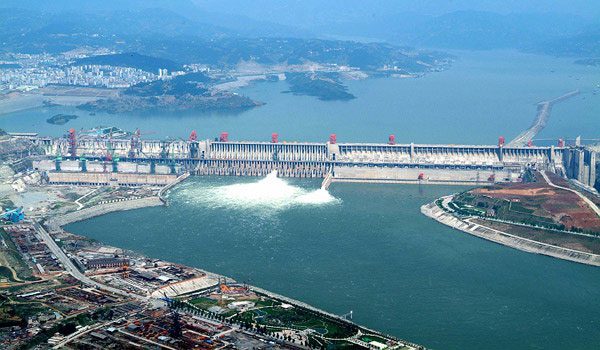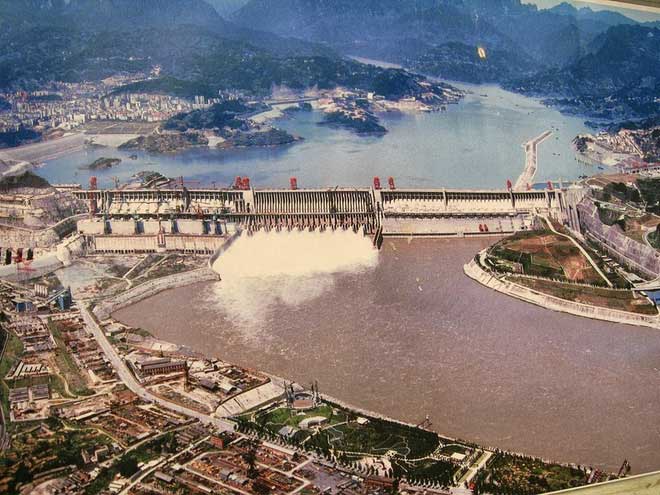The Three Gorges Dam in China (English: Three Gorges Dam) is one of the most ambitious and controversial projects on the planet. But how much do you know about the Three Gorges Dam?
Shocking Facts About the Three Gorges Dam
- Sun Yat-sen, the Father of the Three Gorges Dam Idea
- The Massive Scale of the Three Gorges Dam
- Three Main Purposes
- Addressing the Electricity Shortage
- The Three Gorges Project Took Decades to Complete
- Delays Since the Project’s Inception
- Water Pollution
- Mass Migration
- Better Flood Control
- Electricity Production
- Negative Environmental Impacts
- The High Cost of the Three Gorges Dam
- The Three Gorges Dam Has Slowed the Earth’s Rotation
A dam is a large barrier constructed to obstruct rivers and streams to restrict and utilize water flow for human purposes such as irrigation and hydropower generation. Therefore, dams are remarkable feats created by humanity, aimed at bringing electricity to the lives of surrounding communities.
However, at the same time, it is also a subject of notable national, regional, or even international controversy. And, no dam has attracted as much notoriety as the Three Gorges Dam—a structure so massive that it has actually slowed the rotation of the Earth.

So, if you want to hear the story behind the Three Gorges Dam—a man-made monument serving innovation or a destructive beast? You will find answers through the 13 facts about the Three Gorges Dam below:
Sun Yat-sen, the Father of the Three Gorges Dam Idea
Often regarded as the father of modern China, Sun Yat-sen initially proposed the idea of the Three Gorges Dam as early as 1919. After overthrowing the Qing Dynasty in 1922, Sun Yat-sen ignited the revolution that sowed the seeds of what ultimately became the Republic of China.
In an article titled “Plan for Developing the Industrial Sector,” Sun Yat-sen suggested the construction of a dam that would not only help control the floods of the Yangtze River but also showcase China’s new strength. However, it took a long time for the project to become a reality (construction began in 1994 and completed in 2009).
The Massive Scale of the Three Gorges Dam
Information from China claims that the Three Gorges Dam is visible from space, but scientists assert this is not true. Nevertheless, the dam is enormous. It is made of steel and concrete, with a steel dam measuring 2.33 km long and standing 185 meters above sea level.
China mobilized 510,000 tons of steel to construct this colossal dam. To put this into perspective, this amount of steel could build 60 Eiffel Towers, the symbol of France.
The dam is designed to handle water levels of “once in a millennium” at 175 m, or flow rates of up to 70,000 cubic meters per second. Currently, according to Chinese officials, the dam’s water level is at 147 m with a flow of 26,500 cubic meters per second, which is completely safe.
The reservoir stretches on average about 660 km long and 1.12 km wide. The reservoir has a volume of 39.3 billion cubic meters and a total water surface area of 1,045 km². Upon completion, the total area of submerged land in the reservoir is 632 km².

Three Main Purposes
Although the Three Gorges Dam tends to attract more negative attention, it also has several noteworthy positive benefits.
The Three Gorges Dam is designed to serve three main purposes: flood control, hydropower generation, and improving transportation, which some believe is a significant advantage of having the dam.
Addressing the Electricity Shortage
To generate energy, hydropower projects require significant infrastructure. The Three Gorges Dam provides power to millions of users with 34 gigantic turbines, totaling an electricity generation capacity of 22,500 MW. The Chinese government estimates that the Three Gorges project cost 180 billion yuan (22.5 billion USD).
The Three Gorges Project Took Decades to Complete
For many years, the idea of building a dam large enough to block the Yangtze River seemed unfeasible. After Sun Yat-sen’s proposal in 1919, discussions about the Three Gorges Dam did not occur until 1944-1946.
The Republic of China signed a contract with the U.S. Bureau of Reclamation to design the dam in 1946. However, the project was quickly canceled due to the Chinese Civil War following World War II. There were several attempts to construct the dam in the 1950s and 1970s, but social instability forced delays.
It wasn’t until December 14, 1994, that the Chinese government officially began construction on the Three Gorges Dam, which commenced operations in 2009. To this day, there are still ongoing consistent adjustments being made to the dam.

Delays Since the Project’s Inception
Since the Three Gorges Dam was announced in 1994, the project has been mired in controversy and delays.
The project was initially scheduled for completion in 2008, but skyrocketing costs, environmental concerns, corruption, and resettlement issues caused project timelines to slow and sometimes stall, with local populations suffering more than benefiting.
Water Pollution
One of the biggest controversies surrounding the Three Gorges Dam is the extent of environmental damage it has caused.
It is estimated that 70% of China’s freshwater is polluted, and the dam may exacerbate this issue significantly. The dam is situated atop old wastewater treatment facilities and mining operations. Not to mention, 265 million gallons of raw sewage settle in the Yangtze River each year.
Mass Migration
During the construction of the project, 1.2 million residents were forced to relocate and find new homes.
Currently, the Chinese government is still migrating people out of the area and plans to move hundreds of thousands more in the coming years.
Better Flood Control
Seasonal flooding of the Yangtze River is a terror for local residents year after year. The Yangtze River is the third-longest river in the world, stretching 6,357 km across Asia.
The Three Gorges Dam helps regulate the river during flood season, protecting millions of homes and lives downstream, as well as major cities adjacent to the Yangtze, such as Wuhan, Nanjing, and Shanghai.

Electricity Production
The Three Gorges Dam generates 11 times more energy than the Hoover Dam built in the U.S. in 1936, making it the largest power plant in the world, with a capacity of 22,500 MW.
The amount of energy produced is immense, with the Three Gorges Dam being said to significantly support the entire nation of China.
Negative Environmental Impacts
The area surrounding the Three Gorges Dam is home to 6,400 plant species, 3,400 insect species, 300 fish species, and over 500 species of terrestrial vertebrates.
The dam not only affects these species but also the environment in which they live.
Erosion of the reservoir has caused landslides and even threatened one of the world’s largest fishing industries in the South China Sea. The dam is so large that it has created a microclimate that threatens the region’s ecosystem. A microclimate is a localized atmosphere that has a climate different from the surrounding area.
The High Cost of the Three Gorges Dam
The Three Gorges Dam is far from cheap. Estimates of the total cost of the dam have varied widely from $25 billion and have skyrocketed to $37 billion according to some calculations.
The project has even faced opposition from the Chinese parliament due to these costs, as well as the 140 towns, 13 cities, and 1,600 settlements (historical sites) that were displaced to build the dam.
The Three Gorges Dam Has Slowed the Earth’s Rotation
The secret behind this phenomenon is inertia. When the dam is at maximum capacity, the reservoir holds 42 billion tons of water. Such a change in mass affects the Earth, adding 0.06 microseconds to the length of a day.
- China operates a giant hydropower dam, taller than the Three Gorges Dam
- Is the Three Gorges Dam in China deforming?
- China’s largest dam is as powerful as 15 nuclear reactors
- Top 10 people with the highest IQ in the world
- Survival skills when buried alive in a coffin
- The mystery of the Ma Cave and ancient coffins
- Why did Princess Taiping not inherit the throne from Empress Wu Zetian?


















































